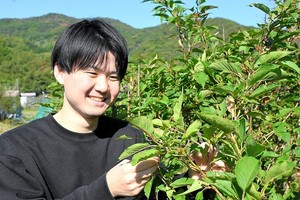July 29, 2024 at 13:32 JST
 This brown building houses the education ministry in Tokyo’s Chiyoda Ward. (Asahi Shimbun file photo)
This brown building houses the education ministry in Tokyo’s Chiyoda Ward. (Asahi Shimbun file photo)
Increasingly earnest discussions are under way within a special working group of the Central Council for Education.
It is considering how universities and other institutions of higher education should change as the birthrate plummets, and what policy measures the central government should take.
The working group is set to produce a report on the matter by the end of fiscal 2024, which closes in March.
The population of 18-year-olds is expected to shrink from the current 1.1 million to only 820,000 in 2040.
Japan’s 810 universities are currently enrolling 630,000 new students annually in undergraduate courses.
That number will dwindle, too.
To allow Japanese society to stay at a certain standard, there is a need to maintain the so-called “sum of all knowledge,” a concept embracing both quantity and quality. This can be done by improving the capabilities of students as they finish their education, even though there will be fewer and fewer of them.
And to improve the quality of education, it is essential to enrich it in content, including by offering transdisciplinary education that merges both science and nonscience majors instead of providing compartmentalized knowledge alone.
It is also essential to admit more foreigners and people with full-time jobs, to foster an environment in which students with diverse backgrounds intermingle.
Thought should also be given to developing, for example, online classes available to people living overseas or in remote areas.
Implementing such measures without imposing more financial burden on the students requires financial assistance from the central and local governments. It also needs increased donations and investments from the private sector.
So far, the working group has discussed recommendations that would make it easier for universities to close when too few students enroll.
That is because 53 percent of all private universities, many of them small-scale establishments in the countryside, are failing to meet their admission quotas.
Among the measures being discussed is extending financial assistance to a university that has stopped admitting new students to keep it open until the last student graduates.
Another is creating a framework that would allow students to continue their studies at another university or other establishment if theirs closes.
A university that has made its own survival into an end in itself and can no longer provide education of sufficient quality would have no choice but to close up shop.
It should be noted, however, that a university’s value should not be gauged merely on whether it meets its admissions capacity.
Particularly in the countryside, many universities are developing personnel who are indispensable for their regional communities, such as child care and nursing staff. Some are providing higher education to the children of local households that cannot afford boarding costs.
What, then, should be done with universities that provide a substantial education but fail to meet their enrollment quotas because they are located in an area with a desperately low birthrate?
What should be done to deal with the problem of students leaving the area upon graduation instead of settling down there, because of a lack of attractive jobs?
Clues to measures for addressing these questions could be found in policies being taken in South Korea and Taiwan, whose birthrates are even lower than Japan’s.
South Korea has linked its promotion of provincial universities with other measures, including industrial, labor and demographic policies.
Taiwan has a mechanism in place whereby a university with a student shortfall is exempted from subsidy cuts in the event that it curtails its admission quota on its own.
However, it is unsuitable for Japan’s state bodies to forcefully push forward with measures. This is because in Japan there is a tradition of valuing university autonomy.
But it nevertheless appears sensible to scrutinize possible measures one by one and discuss whether they could be effective in Japan.
--The Asahi Shimbun, July 28




















A peek through the music industry’s curtain at the producers who harnessed social media to help their idols go global.
A series based on diplomatic documents declassified by Japan’s Foreign Ministry
Here is a collection of first-hand accounts by “hibakusha” atomic bomb survivors.
Cooking experts, chefs and others involved in the field of food introduce their special recipes intertwined with their paths in life.
A series about Japanese-Americans and their memories of World War II